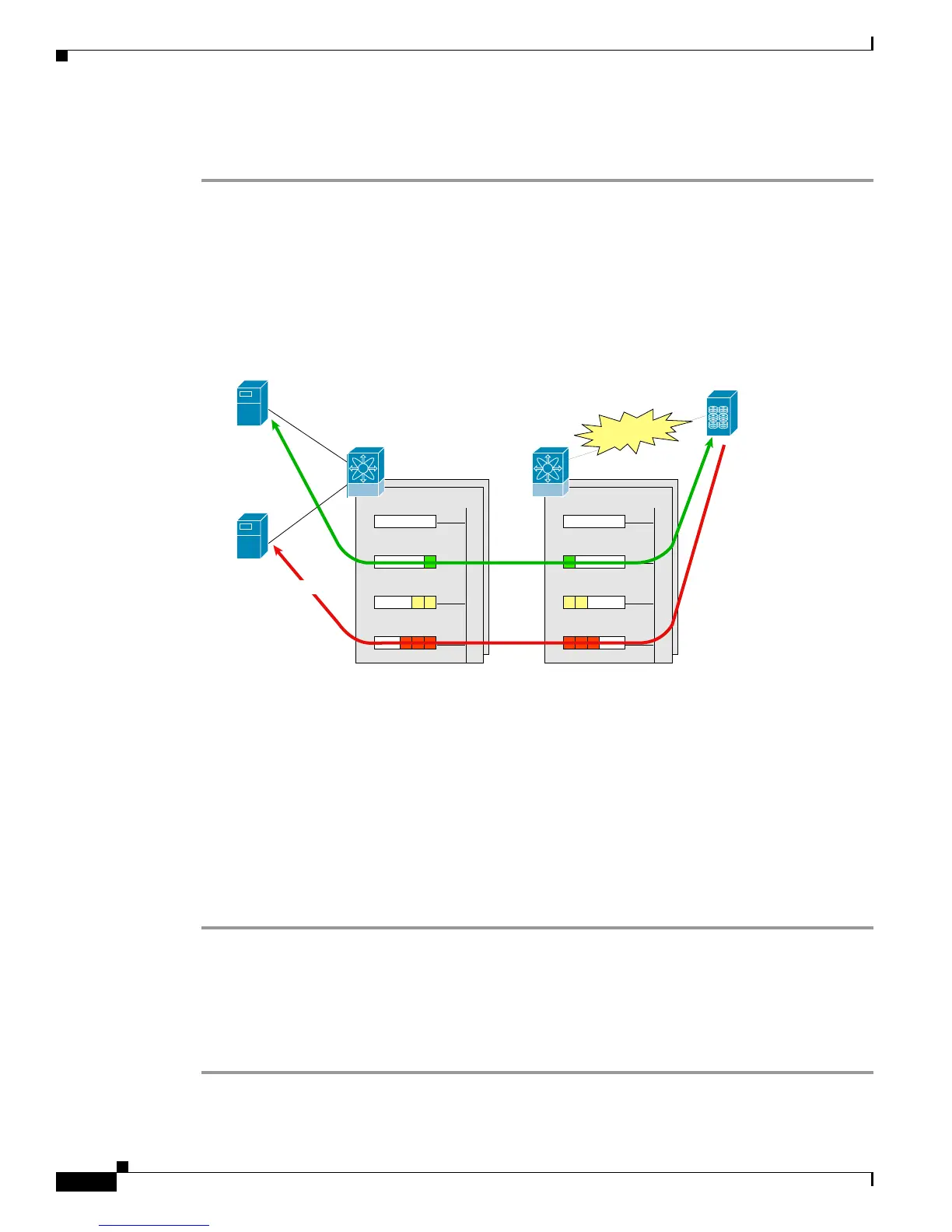Send documentation comments to mdsfeedback-doc@cisco.com
64-10
Cisco MDS 9000 Family Fabric Manager Configuration Guide
OL-17256-03, Cisco MDS NX-OS Release 4.x
Chapter 64 Configuring Fabric Congestion Control and QoS
Example Configuration
Step 3 Select a switch and change the weight.
Step 4 Click the Apply Changes icon to save your changes.
Example Configuration
This section describes a configuration example for the application illustrated in Figure 64-7.
Figure 64-7 Example Application for Traffic Prioritization
Both the OLTP server and the backup server are accessing the disk. The backup server is writing large
amounts of data to the disk. This data does not require specific service guarantees. The volumes of data
generated by the OLTP server to the disk are comparatively much lower but this traffic requires faster
response because transaction processing is a low latency application.
The point of congestion is the link between Switch 2 and the disk, for traffic from the switch to the disk.
The return path is largely uncongested as there is little backup traffic on this path.
Service differentiation is needed at Switch 2 to prioritize the OLTP-server-to-disk traffic higher than the
backup-server-to-disk traffic.
To configure traffic prioritization for the example application, follow these steps:
Step 1 Create the class maps.
Step 2 Create the policy map.
Step 3 Assign the service policy.
Step 4 Assign the weights for the DWRR queues.
Step 5 Repeat Step 1 through Step 4 on Switch 1 to address forward path congestion at both switches.
VOQ(s)
Absolute
High
Medium
Low
FCFC
VOQ(s)
21:00:00:0c:50:02:ca:b5 22:00:00:04:cf:22:eb:dc
Absolute
High
Medium
Low
Switch 1 Switch 2
Congestion
130667
Disk
OLTP server
Backup server
21:00:00:0c:50:02:c7:ff

